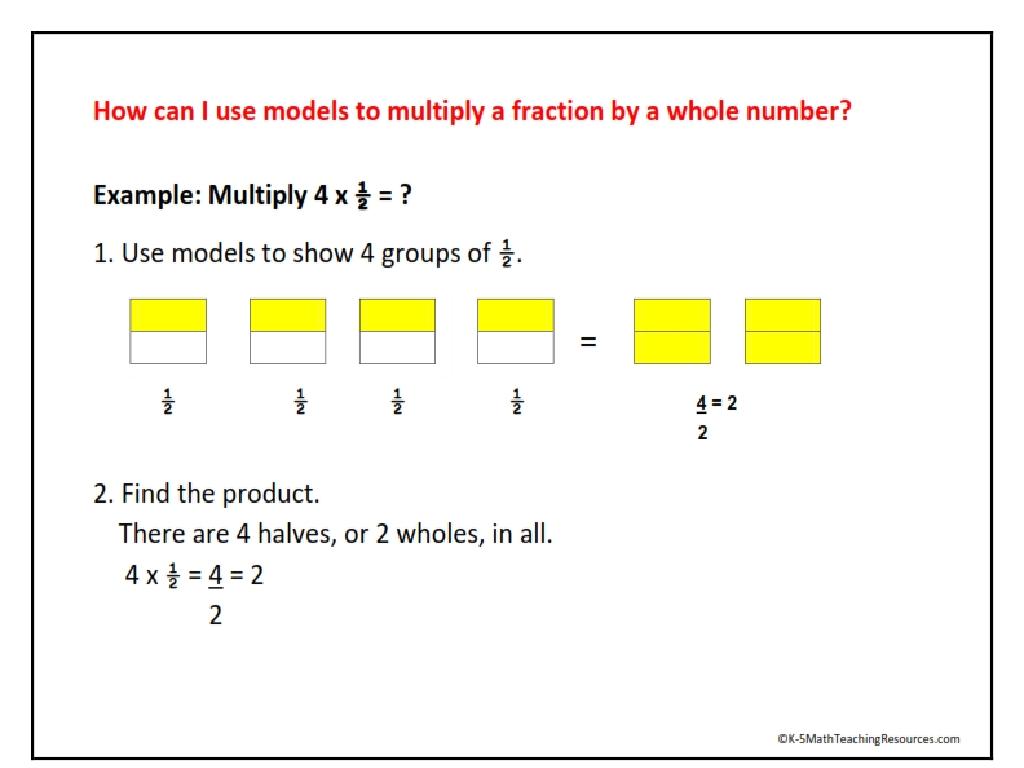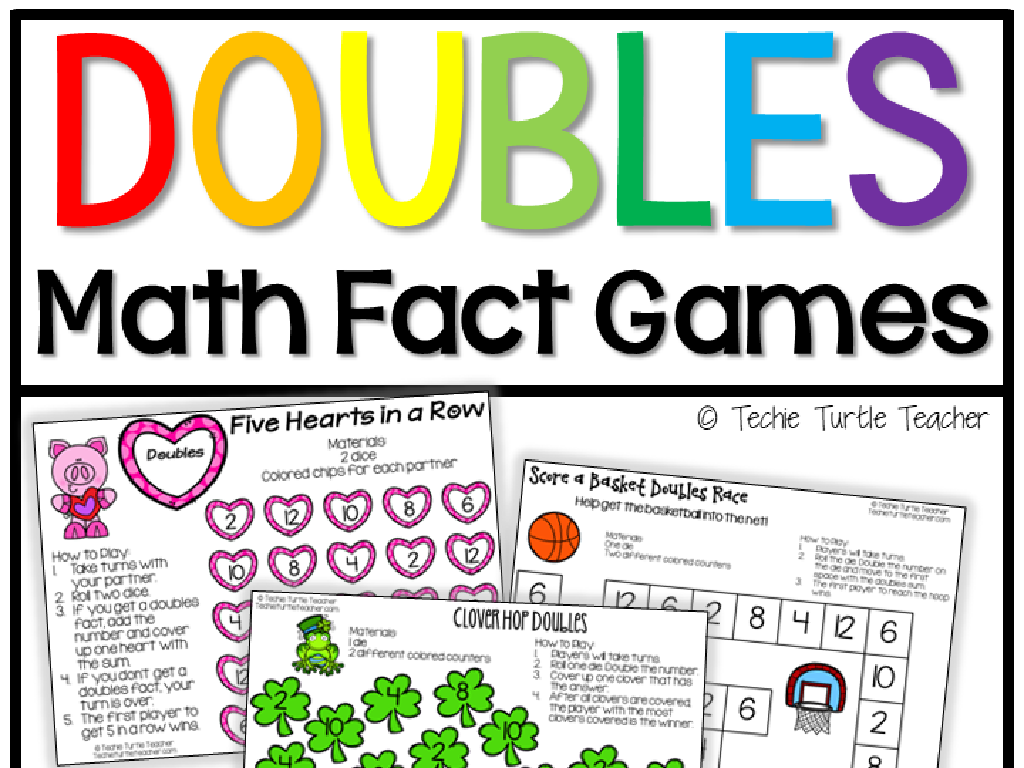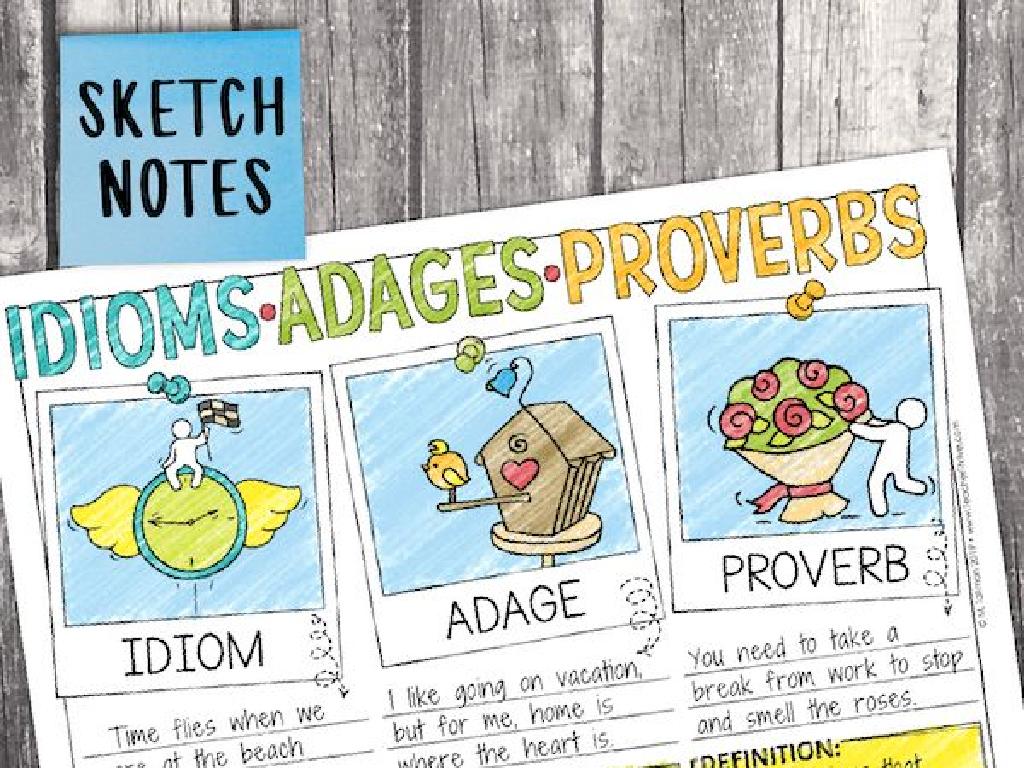Balance Subtraction Equations - Up To Three Digits
Subject: Math
Grade: Second grade
Topic: Subtraction: Three Digits
Please LOG IN to download the presentation. Access is available to registered users only.
View More Content
Welcome to Subtraction!
– Learn to balance subtraction equations
– Subtract numbers up to three digits
– E.g., 456 – 123, start by subtracting ones, then tens, then hundreds
– Use subtraction to find missing numbers
– Find what to subtract from 456 to get 333
– Practice with fun activities
– Solve problems using objects, number lines, or drawings
|
Today’s lesson introduces second graders to the concept of balancing subtraction equations with numbers up to three digits. Start by explaining the process of subtraction by breaking it down into ones, tens, and hundreds. Use visual aids like base-ten blocks or number lines to help students understand the concept of ‘taking away’. Introduce the idea of finding a missing number in an equation, such as what number needs to be subtracted from 456 to result in 333. Engage the class with hands-on activities where they can practice subtracting with physical objects or by drawing representations of the problems. Encourage students to work in pairs or groups to foster collaborative learning and problem-solving skills.
Understanding Subtraction
– Subtraction means taking away
– It shows how many are left
– If you have 5 apples and eat 2, how many are left?
– Subtraction finds the difference
– What’s the difference between 300 and 150?
– Practice with three-digit numbers
– Let’s subtract 123 from 456 and see what we get!
|
This slide introduces the concept of subtraction to second-grade students, explaining it as the process of taking one number away from another. Emphasize that subtraction is used to find out how many items are left after some are taken away or to determine the difference between two numbers. Use relatable examples like apples to illustrate the concept. The slide also prepares students to apply their understanding of subtraction to larger numbers, specifically three-digit numbers. Encourage students to think of subtraction as a useful tool in everyday life, such as when they spend money or share snacks. Provide additional examples and practice problems to reinforce the concept.
Subtraction Vocabulary: Key Terms
– Minuend: Starting number
– The top number in a subtraction problem, e.g., in 523 – 314, 523 is the minuend.
– Subtrahend: Number taken away
– The bottom number in a subtraction problem, e.g., in 523 – 314, 314 is the subtrahend.
– Difference: Subtraction result
– The answer in a subtraction problem, e.g., in 523 – 314, 209 is the difference.
– Balancing subtraction equations
– Ensure both sides of the equation equal the same value.
|
This slide introduces the basic vocabulary of subtraction that second graders need to understand in order to solve subtraction problems, especially those involving three-digit numbers. The minuend is the starting point, the subtrahend is what we take away, and the difference is what we have left. It’s crucial to emphasize these terms with examples, as they form the foundation for understanding how to balance subtraction equations. Balancing equations is a skill where students ensure that both sides of the equation represent the same total value. Use examples like 523 – 314 = 209 to illustrate how the minuend, subtrahend, and difference relate to each other. Encourage students to practice with different numbers to become comfortable with these concepts.
Balancing Subtraction Equations
– Equations are like seesaws
– A seesaw with equal weight on both sides doesn’t tip over.
– Both sides must be equal
– If one side has a different number, we need to make changes to balance it.
– Subtract to balance equations
– Use subtraction to adjust one side and match the other side’s total.
– Practice with three-digit numbers
– Let’s try balancing equations like 345 – ___ = 123.
|
This slide introduces the concept of balanced equations to second-grade students, using the analogy of a seesaw to help them visualize the need for equality on both sides of an equation. Emphasize that just like a seesaw needs equal weight on both sides to stay level, an equation needs to have the same value on both sides to be balanced. Show how subtraction is used to find the missing number that balances the equation. Provide examples with three-digit numbers and encourage students to practice this skill with similar problems. The activity will help them understand the concept of equality and the role of subtraction in maintaining balance within equations.
Subtracting One-Digit Numbers
– Start with simple subtraction
– Example: 7 – 3 = ?
– Take 7 apples, if you give away 3, how many do you have left?
– Find the difference
– The difference is the result of subtraction
– Share your answer
|
This slide introduces the concept of subtraction by starting with a basic one-digit example. It’s designed to help second-grade students understand subtraction as taking away. Begin by explaining that subtraction is finding out how many are left after some are taken away. Use the example of 7 – 3 and ask the students to visualize having 7 items and then taking 3 away. Encourage the students to count backward from 7 to find the answer. After explaining, ask the students to solve the problem and share their answers. This will help them grasp the concept of ‘difference’ in subtraction. Make sure to praise their efforts to build confidence.
Subtracting Two-Digit Numbers
– Start with 54 – 26
– Example: 54 – 26. What is the answer?
– Line up numbers by place value
– Write 54 above 26, ensuring digits are in correct columns
– Subtract ones place first
– 4 – 6? We need to regroup!
– Subtract tens place next
– After regrouping, subtract the tens: 4 tens – 2 tens
|
This slide introduces students to the concept of subtracting two-digit numbers. Emphasize the importance of aligning numbers by their place values before starting the subtraction process. Demonstrate how to subtract starting from the ones place, and if necessary, how to regroup when the top number is smaller than the bottom number in the ones place. Then, move on to subtracting the tens place. Use the example provided to walk through the steps, and encourage students to practice with additional problems. Provide guidance on regrouping, and ensure students understand each step before moving on to three-digit subtraction.
Subtracting Three-Digit Numbers
– Start with 372 – 159
– What is 372 minus 159?
– Regrouping may be needed
– Sometimes we borrow from the next column
– Subtract ones, tens, then hundreds
– Take 9 from 12, then 5 from 11, and 1 from 2
– Check subtraction by adding
– Add 213 to 159 to see if it equals 372
|
This slide introduces students to the concept of subtracting three-digit numbers, with a focus on the process of regrouping, also known as borrowing. Start by presenting the problem 372 – 159 and guide the students through the steps of regrouping. Explain that if the top number is smaller than the bottom number in a column, they need to borrow from the next column to the left. Work through each place value from right to left, ensuring students understand the process. After completing the subtraction, use the inverse operation, addition, to check the work. Encourage students to practice with different numbers and to always verify their answers.
Practice Time: Balancing Subtraction!
– Solve problems as a class
– Everyone participates
– Understand balancing equations
– What does it mean to balance? Both sides of the equation are equal!
– Celebrate our successes
|
This slide is designed to engage students in a collaborative problem-solving activity. Start by solving subtraction problems on the board together, ensuring that each student has an opportunity to participate and contribute. Emphasize the concept of balancing equations, where both sides must have the same value. Encourage students to think of the equal sign as a balance scale that needs to be even on both sides. As students come up to the board to solve problems, provide positive reinforcement to build their confidence. Possible activities include: 1) Pairing up students to solve problems, 2) Creating a subtraction relay race, 3) Using manipulatives to visually represent the subtraction, and 4) Having a ‘balancing equations’ challenge where students create their own equations for peers to solve.
Balancing Subtraction Equations
– Understand the equation: 452 – ? = 123
– Find the missing number
– What number makes the equation true?
– Use subtraction to solve
– Subtract 123 from 452 to find the missing number
– Check your answer
– Add 123 to the result and see if it equals 452
|
This slide is aimed at helping second-grade students understand how to balance subtraction equations with three-digit numbers. Start by presenting the equation 452 – ? = 123 and ask the class what number is needed to make the equation true. Guide them to use subtraction by taking away 123 from 452 to find the missing number. Once they find the number, encourage them to check their answer by adding 123 to it to see if it equals 452. This reinforces their understanding of the relationship between addition and subtraction and helps them practice their arithmetic skills with larger numbers.
Class Activity: Subtraction Bingo
– Let’s play Subtraction Bingo!
– Solve subtraction problems
– Use your subtraction skills to find the answers
– Cover the number on your card
– Each correct answer lets you cover a number
– Aim for five in a row to win!
– Get a straight line of five covered numbers
|
This interactive class activity is designed to help second graders practice and reinforce their subtraction skills in a fun and engaging way. Prepare bingo cards in advance, with numbers that are possible answers to subtraction problems you will provide. Ensure the problems involve three-digit subtraction to align with the lesson’s focus. During the activity, call out subtraction problems and have students solve them and cover the corresponding number on their bingo cards. Offer a variety of problems with different levels of difficulty. Have small prizes or rewards for winners to motivate participation. Encourage students to check each other’s work to promote peer learning. This activity not only helps with subtraction but also with attention to detail and strategic thinking as they aim to get five in a row.
Great Work on Subtraction!
– Congratulations on learning balance!
– Subtraction equations up to 3 digits
– Remember, subtract numbers column by column
– Practice is key to mastery
– The more you practice, the better you’ll get
– Keep practicing at home!
|
This slide is meant to congratulate the students on their hard work learning how to balance subtraction equations with up to three digits. Emphasize the importance of practicing these skills regularly to improve. Encourage them to continue practicing at home with worksheets or math games. Remind them to align the numbers by place value and subtract carefully, checking their work for mistakes. Offer some tips for practicing at home, such as using flashcards, asking for help from family, or using educational apps that focus on subtraction. Celebrate their progress so far and motivate them to keep going!






